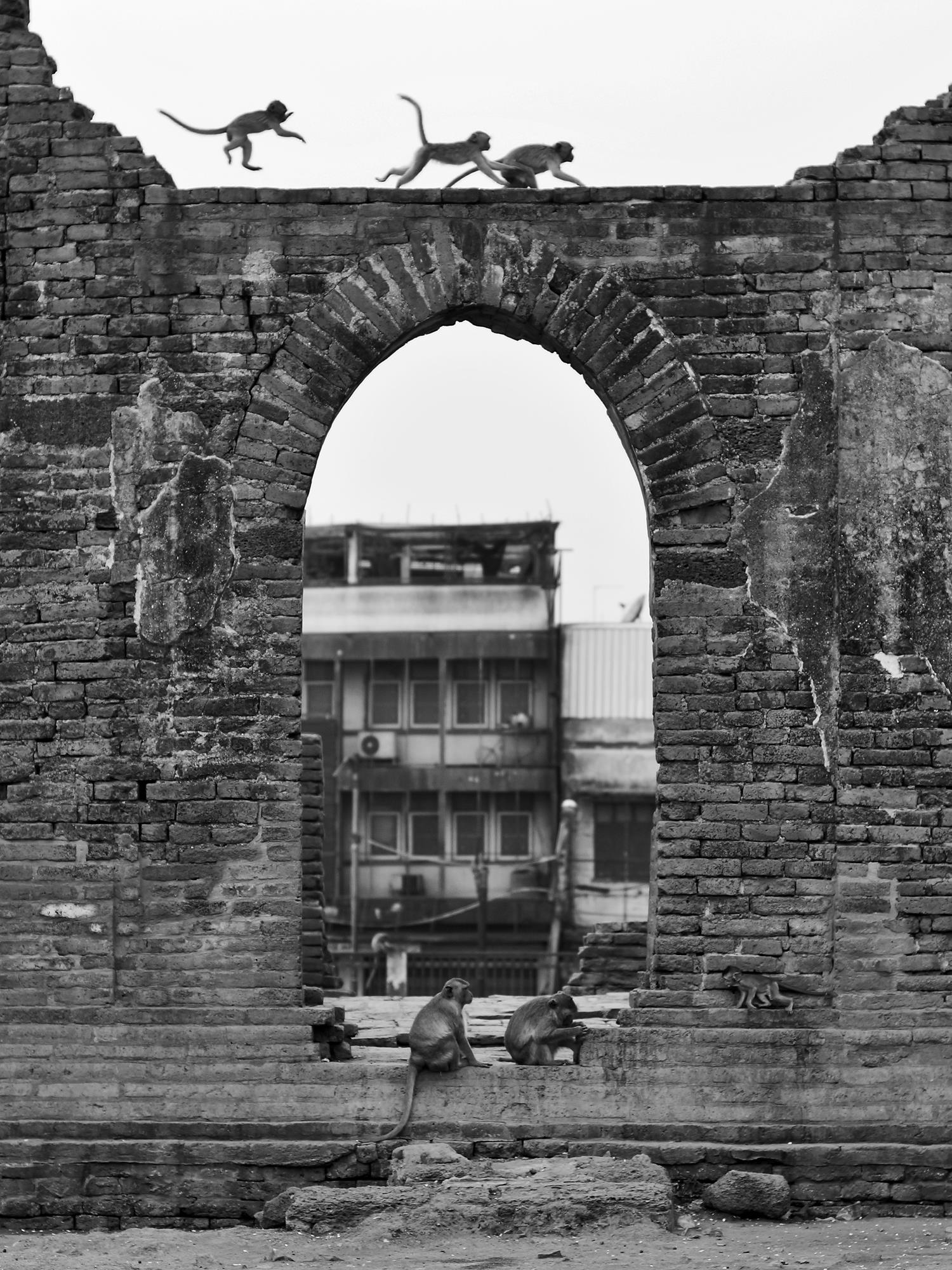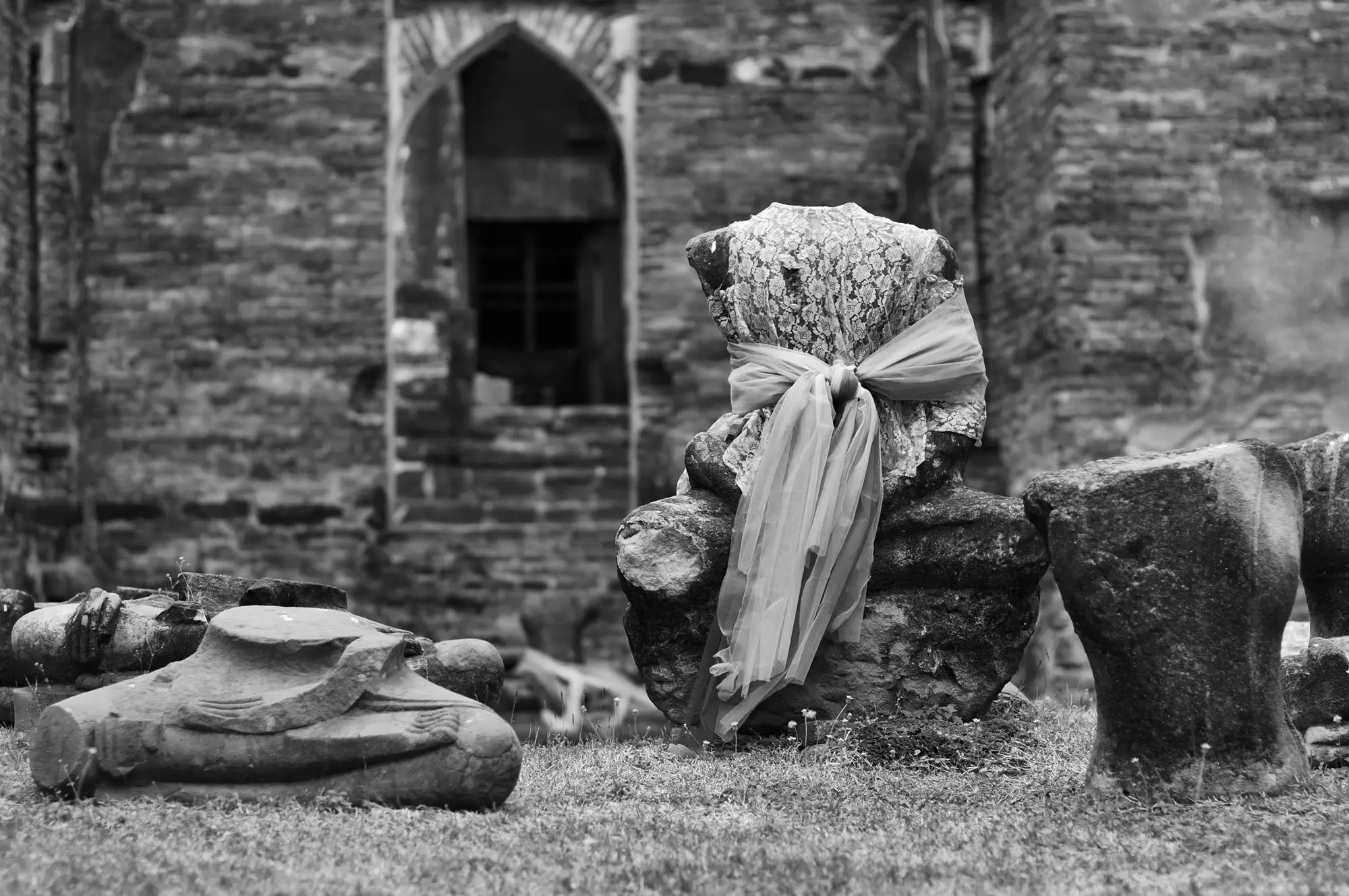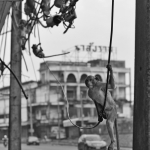
Images shot with the classic Super-Takumar 55mm f1.8
Lopburi, Thailand, is a town that anyone with an interest in photography should visit when in the country.
While the beaches of the south, the hills of the north and the temples nationwide are highly photogenic, Lopburi offers something completely different.
Monkeys. Hundreds and hundreds of monkeys.
That’s not to say it doesn’t have its own temples and other sights but, for most visitors, the Lopburi monkeys are the main reason to go.
They were certainly the reason I went to make this photo essay, and I dare say they’re the reason you found it.
So before we get into my time in Lopburi, let’s help you get the most out of yours.
Contents
What and where is Lopburi monkey town, Thailand?
Lopburi City is the capital of Lopburi Province and sits around 150km or 93 miles north of Bangkok.
It was founded over 1000 years ago by King Kalavarnadish, who hailed from present-day Pakistan.
Originally called Lavapura, Lopburi’s history has seen it:
- be under the rule of the Angkor regime
- described in Marco Polo’s Travels book
- become the second capital of the Ayutthaya Kingdom
- be left to ruin
- become the home of the largest military base in the country
- be most famous today as Thailand’s Monkey Town

Getting to Lopburi from Bangkok and Chiang Mai
In my opinion, the best way to travel from Bangkok to Lopburi is by train.
They leave Bangkok’s Hualamphong station throughout the day and will have you at Lopburi train station within 2.5 hours.
A 3rd class ticket, which gets you onto a carriage with unreserved seating, will only set you back 50 Baht.
You could pay more for air-conditioning but, as the windows are typically open on the 3rd class carriage anyway, I don’t think it’s worth it.
There are Bangkok to Lopburi buses, but the train is cheaper and takes a similar amount of time. On top of this, Lopburi train station is close to all the monkey action in the old town, whereas the bus will drop you further away in the new city.
By the way, if you’re heading south from Lopburi to Bangkok by train, be aware the last one of the day is at 1805.
If you’re travelling from Chiang Mai to Lopburi, or heading from Lopburi to Chiang Mai, the train is really your only option.
With that taking between 8.5 and 11.5 hours (which is very comfortable on the sleeper train) I can only imagine what a nightmare a Chiang Mai to Lopburi bus would be, if any even exist.

Things to do in Lopburi
While the monkeys are undoubtedly the stars of the show, there are some other things to do in Lopburi too.
You can learn about the history of the place at Lopburi museum, and then see some of that history for yourself at the numerous ruins dotted around town.
If you’re in town on the last Sunday of November, you can take in the Lopburi Monkey Festival. The usual advice of don’t feed the monkeys goes out of the window here as they are given a banquet of fresh fruit and vegetables.
if you’re there in February, as I fortuitously was, you might catch the processions and performances of the King Narai Festival.
Out-of-town Lopburi attractions include the Pa Sak Jolasid Dam and reservoir and, if you’re there between November and January, the extensive surrounding sunflower fields.

Where to stay in Lopburi
As a small, provincial Thai town, it’s not difficult to find old, run down hotels in Lopburi.
The first time I visited, I even stayed in one. It’s called the Lopburi Asia Hotel and I don’t recommend it.
There are plenty of nice Lopburi hotels and resorts too but, if you’re on a budget, take a look at Noom Guesthouse.
A family-run place in a great location, close to the train station and monkey areas of town it was (I think) the first hostel in Lopburi and remains popular with travellers and backpackers alike.
You can check prices and availability at Noom Guesthouse on booking.com here.

Advice on Lopburi’s monkeys
Lopburi’s monkeys – which are long-tailed or crab-eating macaques – are really what put and keep the town on the map, but they can cause annoyance if you don’t keep an eye on them and your belongings.
The best advice, which is really common sense, is to put everything you have in your bag and out of sight.
This especially includes food and drinks but is also true for hats, jewellery, and anything else that’s loose, able to be grabbed, and will attract their attention.
Camera straps should probably go around your wrist rather than your neck, for obvious reasons, and your selfie stick should probably be left at home (some may say always and everywhere, not just in Lopburi).
If you’re in a place with lots of monkeys, like in their Prang Sam Yot temple, it’s probably a good idea to move around slowly, gently and deliberately so they know what you’re up to and won’t get alarmed.
Give them plenty of space and don’t corner them anywhere, don’t panic if they get near you or even jump onto you, and you should – should – be okay. 🙂
Also know that the monkeys aren’t everywhere in Lopburi.
They stick to their part of town which means you can always head a few streets away if you need a break from them.

One day in Lopburi, Thailand
Now you know all about visiting Lopburi for yourself, I can tell you about my day there.
I stopped off while travelling down from Chiang Mai to Bangkok and on to Ko Samui.
It wasn’t the first time I’d been to Monkey Town.
The first time I visited, back in 2010, I stayed the night. This time, I knew there was no need.
All I really wanted to do was spend a few hours walking around photographing the monkeys with the classic Super-Takumar 55mm f1.8 on my mirrorless Sony camera and get out again.
If travel photography is your thing too, whether with vintage lenses or not, I do recommend the Sony Alpha series. Small and compact, with interchangeable lenses and superb image quality, there’s no need to haul around a DSLR these days.
Check them out on Amazon here.
But while a day of shooting monkeys was the idea, but there wasn’t much of a plan.
So after getting off the Chiang Mai to Lopburi train sometime before 4am, I sat in the almost deserted station and hatched one.

It was quite simple.
I would leave my bags at the left luggage desk and go out into the dark, pre-dawn streets of Lopburi to find some breakfast and wait for the sun to come up.
The sunrise and morning would be a good time to shoot the monkeys anyway, and if I could stay awake until the afternoon I’d catch a Lopburi to Bangkok train and no doubt be back on Khao San Road by the evening.
Walking out of the station, I was reminded just how ungodly an hour it was to be wandering around.
Aside from a few food stalls preparing for the breakfast rush, there was nobody.


Still with hours to kill until sunrise, I wasn’t exactly sure what to do.
I walked further through the empty streets until I turned a corner and came across a pocket of activity.
The morning market. Bustling with buyers and sellers, meat and vegetables, and local people and me, it was a good spot to hang around while I waited for the Lopburi monkeys to wake up.
As always, I was shooting without a flash, preferring to make use of the artificial ambient light instead.



Despite spending as much time as possible at the market without making myself look too odd, the sun still hadn’t risen and the monkeys still hadn’t woken up.
As I walked back through their neighbourhood, past their temple and over to a cafe near the train station, there was still no sign of them.
There was nothing to do but wait, drink my Coke, and look back over at the monkey temple across the road.


Before long, the sun was rising and the real monkeys began to show their faces too.
As I stood outside the cafe, I could see them appearing in their numbers on the roofs of apartment blocks and shops before swiftly clambering down the three storeys to the street below.
Five of them. Then ten. Twenty, thirty…
The constant stream of small monkeys invading the town from above was extraordinary.
I’ll confess to finding it a little intimidating too. The type of scene you’d expect to see in a film. Part Planet of the Apes, part Gremlins, it was kind of nightmarish to see it happen in front of me.
Nevertheless, at least I could now go to the temple and get what I’d come for: pictures of Lopburi’s monkeys.
The Lopburi monkey temple
The triple-spired Prang Sam Yot temple – the building that is now considered Lopburi’s monkey temple – was likely founded in the 12th or 13th century and built in the Khmer Hindu style.
Shooting with the 55mm Super-Takumar means I got no shots of the whole temple, but I found it difficult to appreciate the building for what it was built for anyway.
When it’s covered in monkeys, it’s easy to lose sight of the architecture and its significance.
You can buy a ticket and enter the temple itself by the way, but I never have.
Walking around the temple’s compact grounds with the monkeys was enough for me.








Leaving Lopburi’s monkey temple, I walked through the monkey-infested streets that surround it and explored the more normal areas of the town.
After sitting down to eat an early lunch, I continued exploring before predictably beginning to feel the effects of that 4am start.
Fortunately, I was in the vast grounds of the 13th century monastery Wat Phra Sri Rattana Mahathat when the exhaustion really hit.
Just across the road from the train station, Wat Phra Sri Rattana Mahathat is today a collection of monkey-less ruins.
With no people around either and plenty of walls to hide behind, I lay down on the grass, hugged my bag and fell asleep.
Waking an hour later, I continued exploring.
Again restricted by the 55mm lens and shooting in monochrome, I stuck to the broken statues rather than the wider scenery.



The midday sun was by this time making staying out in the open uncomfortable, so I left the monastery ruins and headed back into the town.
Earlier in the day, I’d seen the crowds of a festival in and around another famous local building: the Narai Rajanivet Palace.
Known more simply as King Narai’s Palace, it was built in the 17th century and today houses the Lopburi museum.
I wandered in and found it to be full of school children. For a festival, it was also very sedate.
I walked around, took a few shots, but soon left without really immersing myself or bothering to understand what it was all about.
I’ll put that down to still being tired.



I later learned I’d stumbled upon the King Narai Festival; a major event in Lopburi.
Commemorating King Narai the Great, it’s held every February and lasts for a week.
I learnt this from the man at the Namaste India restaurant I ate at shortly before my train to Bangkok was due to leave. He advised me to stay and see the night time activities.
If I’d done my research beforehand, I may have done. As it was though, my mind was set on being in Bangkok that night.
Leaving the festival and Narai Palace grounds behind me, I walked back towards the monkey area – the streets that surround the Prang Sam Yot monkey temple – to get what I’d really come to Lopburi for: pictures of them in their unnatural habitat.
I took all reasonable precautions, carrying no food or drinks in my hands and keeping the straps on my bag tucked in.
Nothing untoward happened when I was there, but I was doing my best to always be aware of what was around and behind me, as well as above – some warn that the monkeys aren’t too shy to defecate on you from their lofty perches.

Monkey photographs in Lopburi monkey town
Lopburi’s urban environment gives the monkeys one massive playground to spend the days climbing on and swinging from.
The cages installed over windows to keep them out just make it easier for them to scale the buildings, while the telegraph wires and poles are used to cross the roads.
They also loiter on the street, hide in the back of moving pick-up trucks, sit menacingly on window ledges high above the town, play with electrical cables, and sometimes kick off and start fighting with each other.





After a while, once the fear that they might attack you subsides, the whole monkeys-in-the-street thing actually starts to feel all very normal.
I began to feel more comfortable trying to get a little closer to them; as slowly and non-threateningly as possible of course, but they didn’t actually seem too interested in what I was doing.
This new found confidence meant I could take my time and get some portrait style shots.
Of monkeys.
Yes, I know.









Although Lopburi’s monkeys do seem happy to mind their own business most of the time, it is worth remembering that they are not tame or domesticated.
The few times I saw squabbles though, they appeared to be territorial.
One monkey was chilling out on an electrical box, another monkey wants to chill out on the same electrical box. A fight starts and quickly ends.
One monkey was sitting on a cable, another monkey wanted to sit on that same cable. A fight starts and quickly ends.
I was able to capture a bit of that second one as it happened.
Using a 55mm lens meant I could stay at a safe distance, so I set my camera to continuous shooting and fired away.




Seconds later, it was over.
The loser slunk away, seemingly unhurt, while the victor sat proudly on his cable, king of the urban jungle until someone else comes along and decides they want to sit there and is prepared to fight him for the privilege.
After all the excitement, I needed a drink and some food before catching the Lopburi to Bangkok train. At the aforementioned Indian restaurant, I got both.
My one day in Lopburi monkey town, Thailand, had been a success. Arriving at 4am had felt like real travelling again; as had taking a nap in the ruined grounds of Wat Phra Sri Rattana Mahathat.
I’d come away with enough decent photos to be able to make this post, and I’d even managed to squeeze in an Indian curry.
After making the short walk back to Lopburi railway station, I took my bag from the left luggage and waited for my train.
One pulled in.
Something told me it wasn’t mine.

There’s just something about a train carrying heavy military machinery through an Asian country recently taken over by a junta that makes it photogenic.
Lopburi had been good to me that day.
The photographs were always going to be about the monkeys, but the town had offered much more to shoot.
Starting with the morning market, continuing with the unexpected festival that I didn’t make the most of, and ending on the final bonus at the station, all I can really say is… tanks, Lopburi.
Tanks a lot.

… p.s. if you’ve enjoyed this post on Lopburi, Thailand and think others will too, why not share or pin it?




















Hello. Great story and pics. What gear did u use?
Thanks Peter, kind of you to say. I used a Sony NEX-5N and a vintage Super-Takumar 55mm f1.8 🙂
You can see a review of the lens here: https://www.myfavouritelens.com/super-takumar-55mm-f1-8/
Neat Pics! You have motivated me enough to go around this weekend and shoot in black and white. Have to figure out I can do that on camera though. Coincidentally, I also have the same lens 🙂
Thanks mate. Always good to hear someone takes something from this site. Keep working on your composition! Black and white can be good for this. As are prime lenses, as we have to think about things more when we can’t zoom. Happy shooting. 🙂